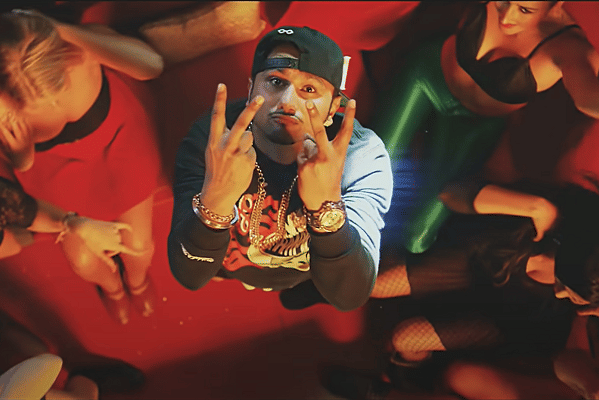Culture
Bois Locker Room Case Is Less About ‘Rape Culture’ And More About Voiceless Victims Of Today’s Free Sex Culture — Children
Yaajnaseni
May 10, 2020, 07:35 PM | Updated 07:35 PM IST
Save & read from anywhere!
Bookmark stories for easy access on any device or the Swarajya app.


Then, why act aghast and offended by a child responding to what he is surrounded by?
The recent controversy over the Bois Locker Room — online groups of young school-going teenagers filled with lewd sexual comments, and one of the boys calling for the gangrape of a girl, rattled social media.
This was followed by the revelation of sexually objectifying comments of some of the girls involved in the controversy and a ‘Girls Locker Room’.
This in turn was followed by another incident that took the social media by the storm.
Someone posted online about how his 17-year-old brother took his own life after a girl accused him of sexual assault on social media. The post says that the boy was being harassed and threatened incessantly on social media after the girl’s post.
Many channels took the ‘Bois Locker Room’ story as an opportunity to blame the “rape culture” of India where ‘violence against women is normalised’.
The narrative here is that Indian culture is inherently patriarchal and the violent comments and acts against women are but a logical outcome of that.
This is putting the cart before the horse.
The teenagers involved in the controversy are all urban, seemingly upper class students, living in one of the most modernised cities in the whole country.
So, what exactly is the “Indian culture” that is being blamed?
Is it the Bollywood culture where women are represented mostly as sex-objects?
Is it a remnant of the “rape culture” that followed Muslim invasions with mass rapes and enslavement of Hindu women?
Is it the culture that couldn’t stand expressions of female sexuality in temple sculptures and destroyed it?
Is it the British Raj’s Victorian morality that called Indians ‘weak’, ‘effeminate’, ‘slavish’ for their respect and expressions of the feminine?
Is it a masculinist reaction to all of this?
The one-size-fits-all ‘blame the Indian culture’ diagnosis, the ‘toxic masculinity’, and the 'all men are trash' narrative not only take the focus away from understanding the roots of the problem, but also possibly cost a child his life.
A child that ultimately us adults are responsible for, never got a chance to be tried in a court of law, reform, and move on with his life after serving the court sentence.
The weakest get punished for modern normalisation of sexual violence
The one thing we could have done differently as the adults in the situation is to curb the impulsive, aggressive, and blind outrage.
Isn’t it mighty hypocritical of us to act aghast and outraged over the acts of a child which the adults themselves have normalised and popularised?
About 30 percent of the Internet is pornography and 88 per cent of pornography shows violence against women.
TV shows, songs, movies are all filled with objectification of the human body, the emphasis of using one’s own and other’s bodies for short-term gratification, promiscuity, and, in general, impulsiveness, indiscipline, law-breaking, consuming drugs and alcohol, being ‘cool’.
It is ironical how the representation of female sexuality in popular culture has become increasingly crude and superficial at the same time as the feminist movement has made great strides.
This isn’t to say that watching pornography or sexually explicit content is directly responsible for increase in sex-crimes.
But in the context of children, it is one of the factors that works in conjunction with other trends of modernity — increasing loneliness, materialism, individualism, less connected families, busy parents, alienation of urban life, broken families etc.
Growing up — from childhood to adulthood — is itself a struggle. You have to learn news skills, move from being a careless child to being an adult on his own in the world.
Puberty is a difficult time. Your body is changing fast, and you’re adjusting to the changes.
Meanwhile you’re also building your personality that you have to live with the rest of your life. You are also worried about marks, a good career, pleasing your parents as well as your friends.
As adults, we often forget how real these struggles are for teenagers.
At this crucial time, it is easy for the children to turn to bad habits as a coping mechanism. Teenagers can turn to drugs, online bullying, pornography, gaming addiction etc., as an easy way to bond or belong with others.
A 2011 study in USA found that 90 per cent of Americans with substance use disorders began using alcohol or other drugs when they were younger than 18.
These habits cause neurochemical effects that fundamentally change how the child’s brain functions, and have long term, permanent consequences.
This is, therefore, quite serious a challenge for India with a young demography.
There are two ways sexually explicit and violent content can affect children.
One, it can push the ones who are already more likely to commit crimes (say socially maladjusted, those with psychological issues) towards actually committing the crime.
For example — a group of pedophiles that get together on the internet and distribute child pornography.
Since teenage is a tough time, it comes very easy to many, who are also struggling with other issues, to hook their malicious tendencies with sexual gratification. A criminal, in this case, can learn to derive strength to commit crimes from the sexual energy reservoir.
Those who develop escape mechanisms like resorting to drugs, pornography etc., also have a stunted emotional development. One can always resort to the addiction rather than dealing with, and overcoming, the problem.
Growth stops when the addiction begins. That’s how you get a 35-year-old with the emotional maturity of a 12-year-old.
Unable to deal with the responsibilities of a job and family, they resort to anger, violence, and possibly more alcohol and drugs.
The children in the situation would be affected by this, and exposed to the risk of being dysfunctional as an adult themselves, making it a vicious cycle.
Two, it can drive otherwise non-criminal minded people to commit a crime.
A lot of crimes are the ones not committed by bad people, but good people who couldn’t do the right thing when suddenly hit by a crucial choice-point in life.
Imagine a group of young men who watch and talk online about pornography regularly — a bois locker room.
Logically, for the amount of time a teenager spends on the internet today and the easy accessibility of porn, this group would be watching, joking and candidly talking about the violent, even criminal sexual acts. This shouldn’t come as a shock to any of us.
One of these days, a boy suggests actually assaulting a woman (a very common theme in a lot of pornographic movies — a woman attacked first is shown enjoying it later). In this case, the hormones, the peer pressure and mob mentality may combine together to produce a catastrophic result.
Porn and erotica-watchers might be frowning at this criticism. They may argue that there is no substantial research connecting sexual crimes to watching porn.
The point isn’t that sexual content is bad, the point is that we keep our children away from the things we suspect to be even slightly harmful. As adults we don’t take risks in this regard because even a little harm to a child is too much.
And remember, children, by definition, are more impulsive and immature.
There is another important philosophical question here.
Since, as a society, we are moving towards a free-sex culture where sexual relations become increasingly meaningless and value-less from the perspective of society, spirituality, and culture (and are instead more about short-term individual gratification) — who mediates and what defines the propriety and impropriety of the conduct of either sex?
Yes we can draw a clear line, legally, with certain acts — threat of rape, violence, for example.
But what about a teenager making joke on rape in a closed group on social media, can he be punished?
And if he can be, why do we, as a society, allow porn directors to produce sexual content simulating rape (with a small warning that it’s just acting)?
Why allow show-business elites who otherwise can’t stop preaching about women empowerment to produce violent, objectifying, sexual content?
Why allow comedians (most of them ideologically left-liberals) who crack rape jokes?
Adults who enjoy this content aren’t punished. Adults who produce this content (and become millionaires) aren’t punished. But a child who is surrounded by it and gets influenced as any child would be, is punished.
If the adults misbehaving, using drugs and alcohol, cracking crass jokes is “cool”, if that gets millions of eyeballs on YouTube, a contract with a music label or own TV show, then, but naturally a child on his journey to becoming an adult will act likewise.
This elitist hypocrisy of punishing the weak and the voiceless is visible at large in Indian intellectuals, including in the recent incidents of complaint against persons for jokes on social media (link1, link2, link3).
How women’s issues have been weaponised for ideological power-play, how Left’s fascism of victimology is waging a war against art, culture, and pretty much anything that gives meaning to our lives, how free-sex culture is killing our freedom by bringing big state to adjudicate our personal choices, and how the Left gets away with blaming ‘Indian culture’ for its own failures — this we will address in the second part of this piece.
A 25-year-old IIT alumna with deep interest in society, culture and politics, she describes herself as a humble seeker of Sanatana wisdom that has graced Bharatvarsha in different ways, forms and languages. Follow her @yaajnaseni




